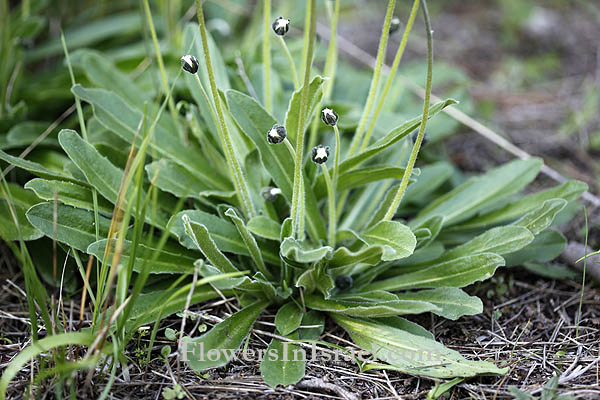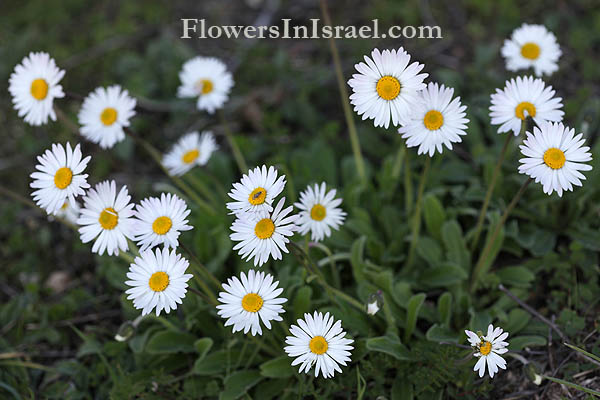Hebrew: חיננית הבתה, Arabic: البليس الحرجي
| Scientific name: | Bellis sylvestris Cyrill. | |
| Synonym name: | Bellis silvestris Cyrill. | |
| Common name: | Southern Daisy | |
| Hebrew name: | חיננית הבתה | |
| Arabic name: | البليس الحرجي | |
| Family: | Compositae (Asteraceae), מורכבים |

|
| Life form: | Hemicryptophyte, perennial, usually scapose | |
| Stems: | 30 cm; erect, basal branching, pubescent | |
| Leaves: | Rosette, elongated spatulate with winged stalks; one central vein and several branching sub-veind | |
| Inflorescence: | Capitula solitary | |
| Flowers: | 3-4 cm flower head diameter; yellow center made up by few hundreds of disc florets, and white radiating petals (ray florets); purple tipped petals | |
| Fruits / pods: | Brown achenes without pappus; one-seeded, often tooth-shaped fruit without any wind disperal mechanism | |
| Flowering Period: | January, February, March, November, December | |
| Habitat: | Batha, Phrygana | |
| Distribution: | Mediterranean Woodlands and Shrublands, Montane vegetation of Mt. Hermon | |
| Chorotype: | Mediterranean | |
| Summer shedding: | Ephemeral |

Derivation of the botanical name: Bellis, Latin, bellus, pretty; the white daisy, ox-eye; Linnaeus: Bellis perennis. sylvestris; sylva, woods, forest; sylvestris, of or belonging to the forest or woods, more correctly: silvestris, sometimes silvester; growing in the woods, wild. The Hebrew word: חיננית, chenanit, a daisy, from חן, chen, grace, beauty.




|